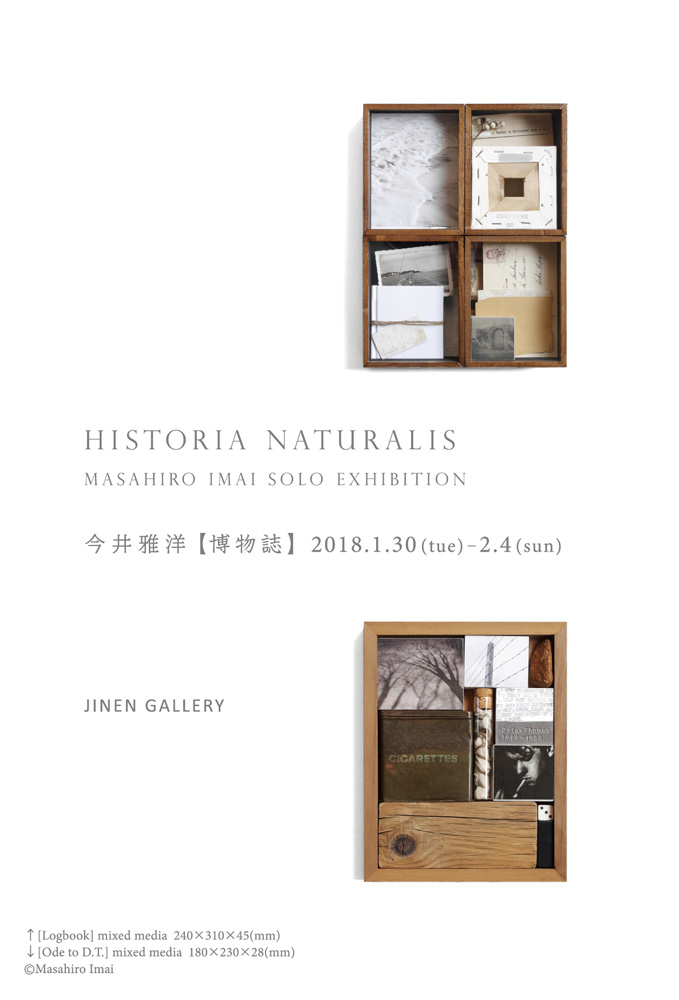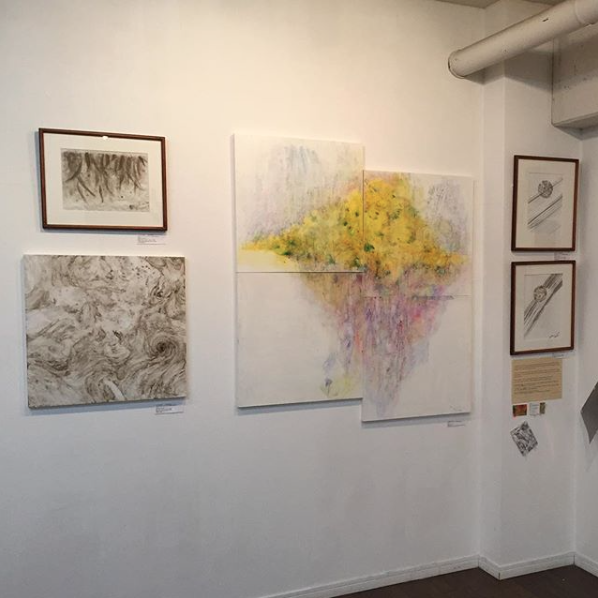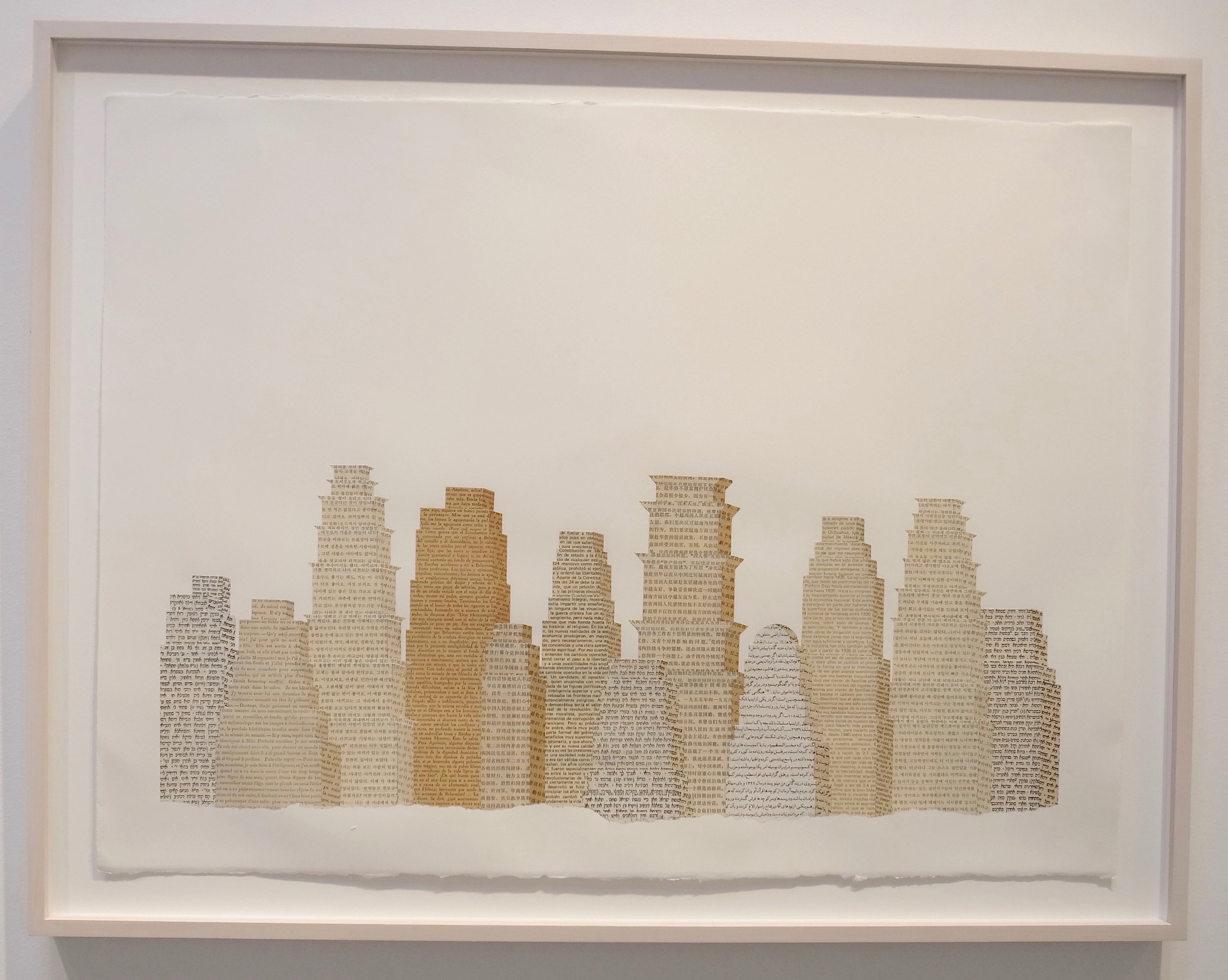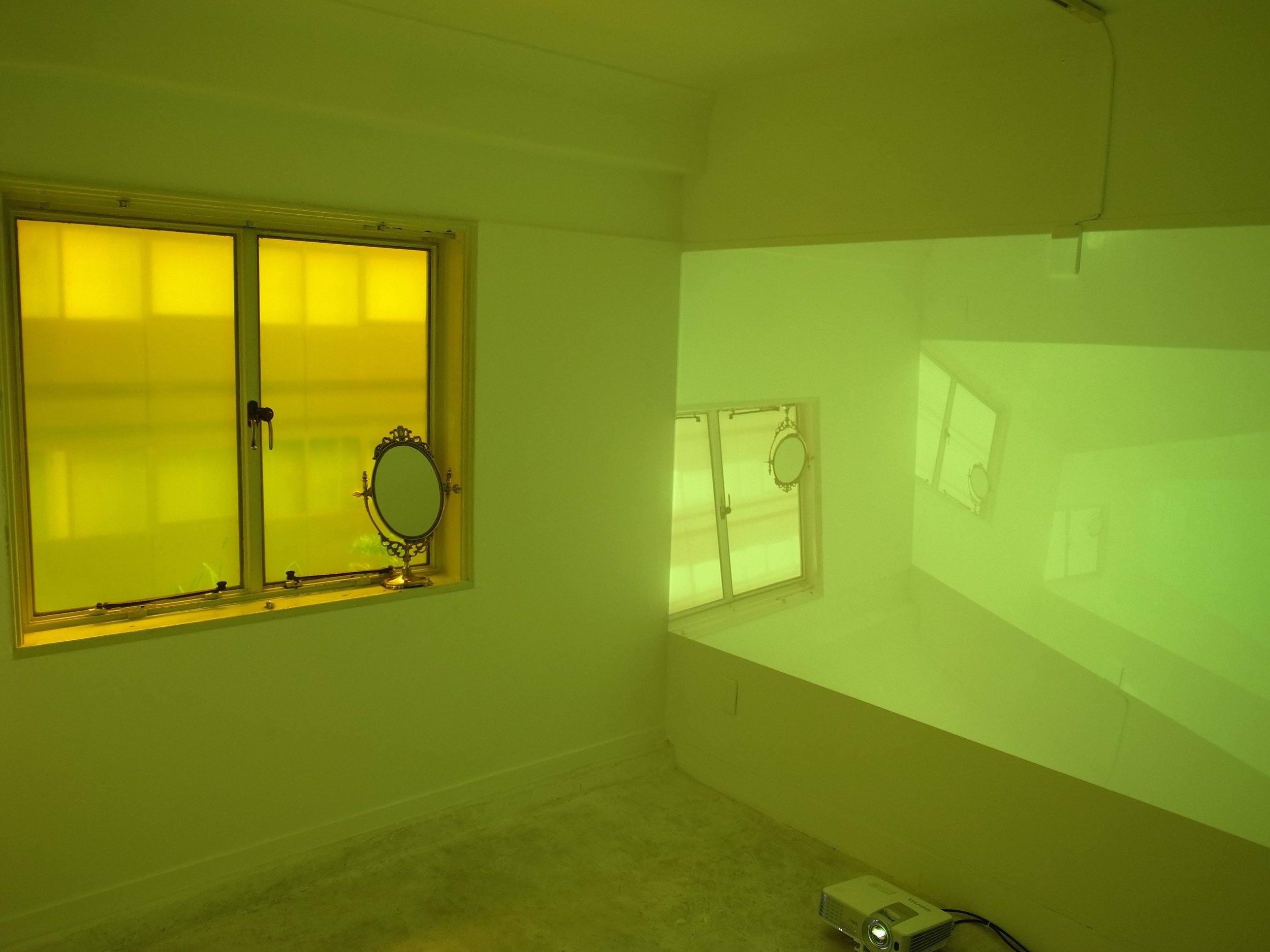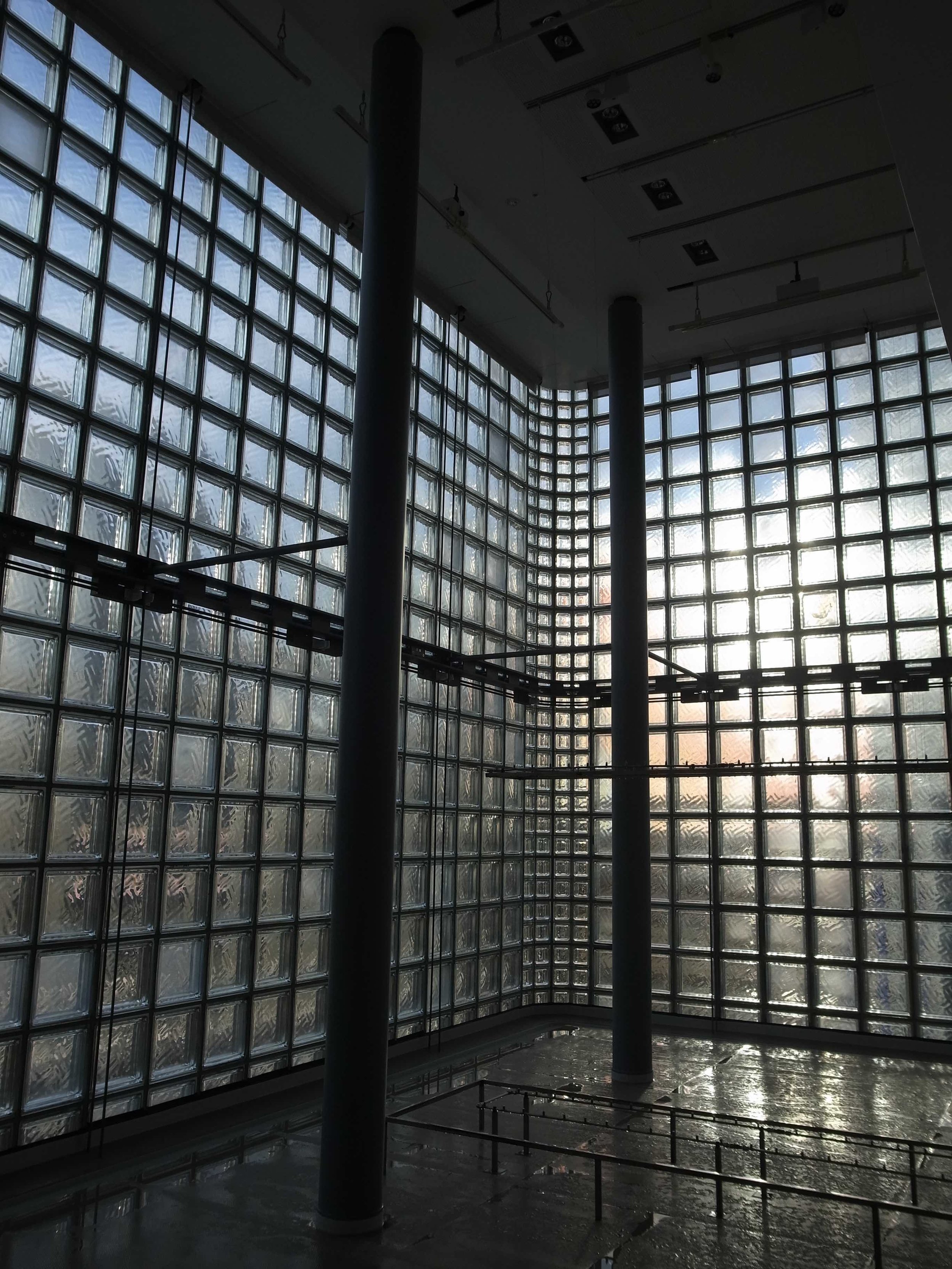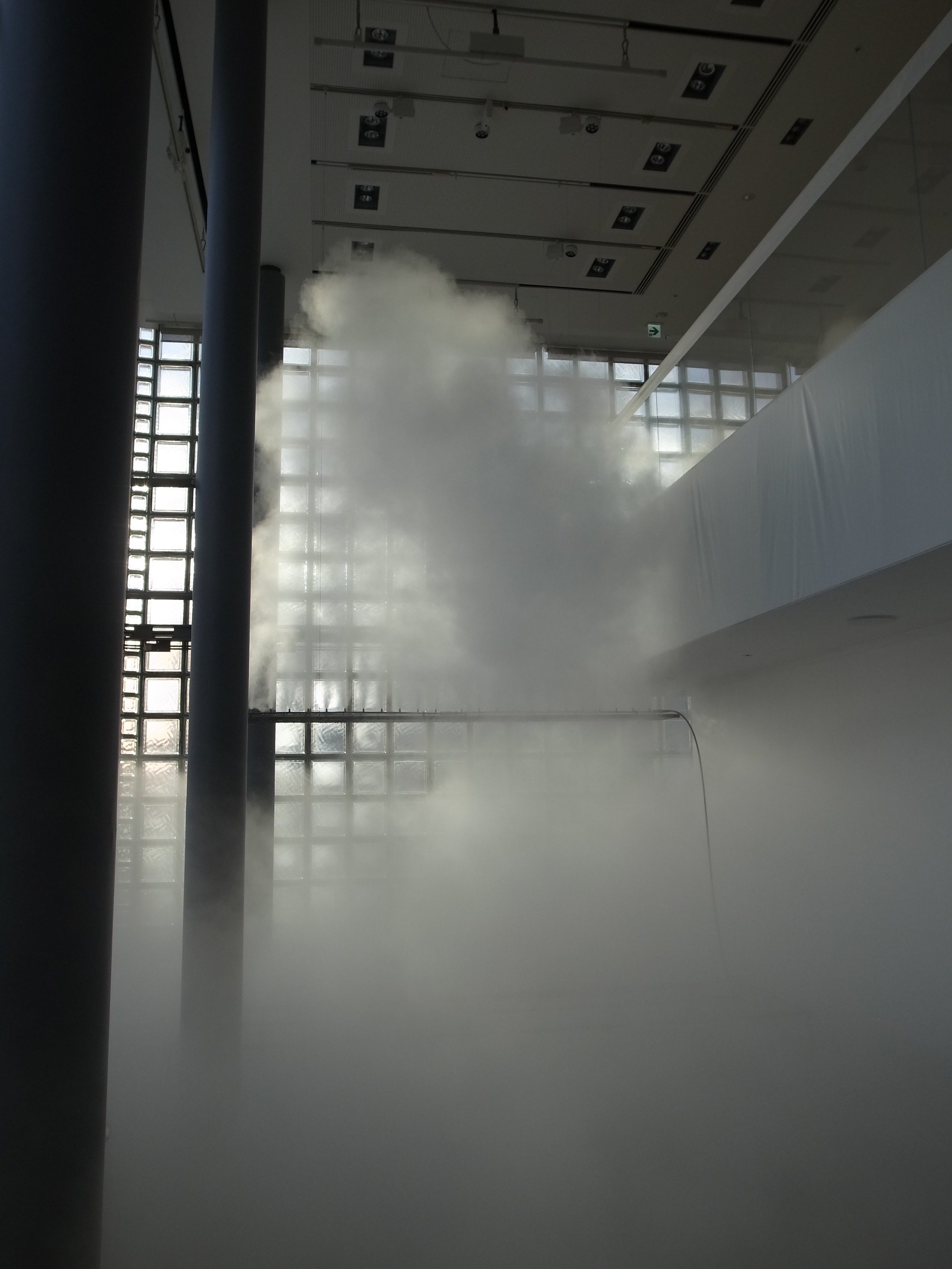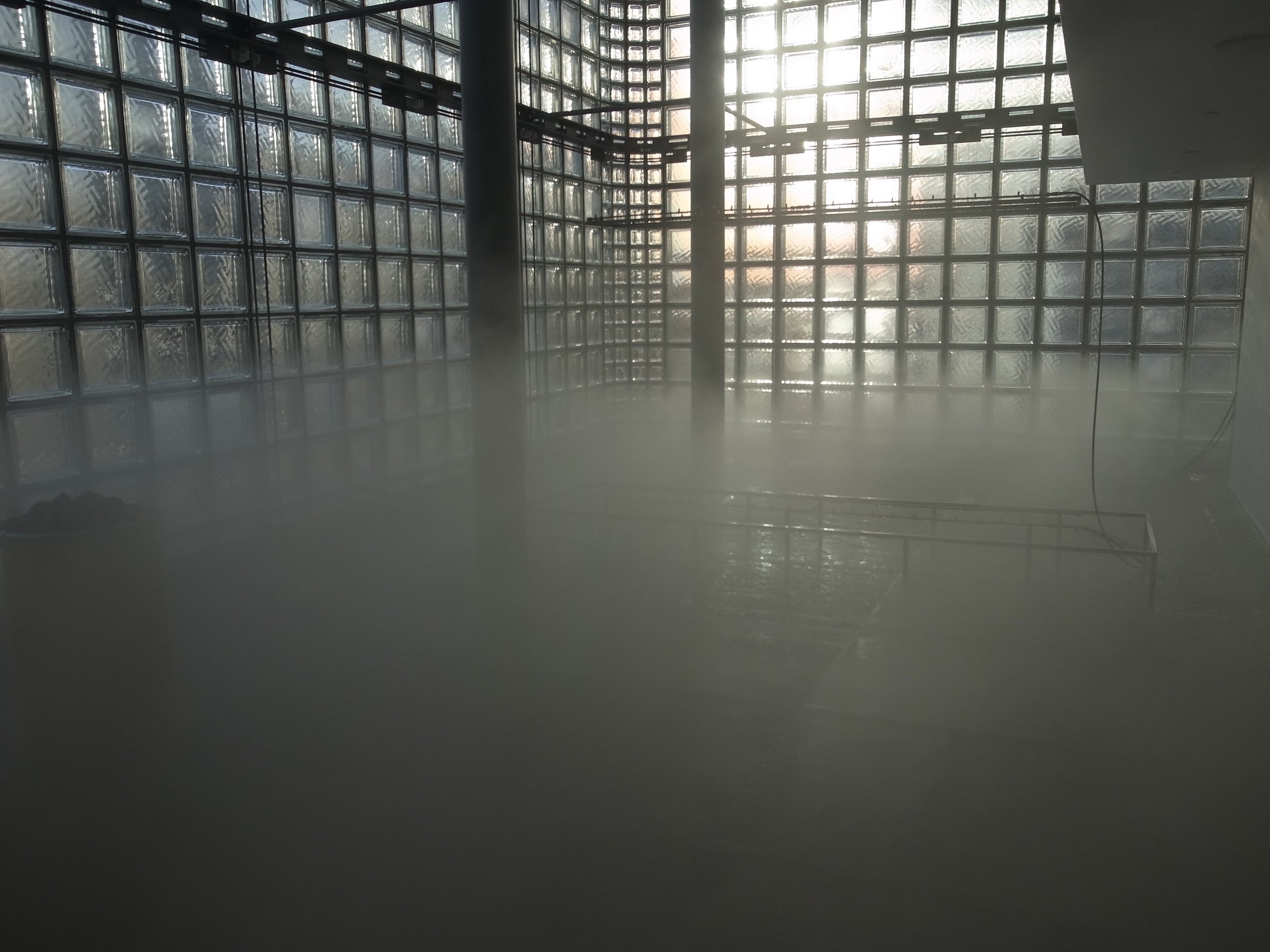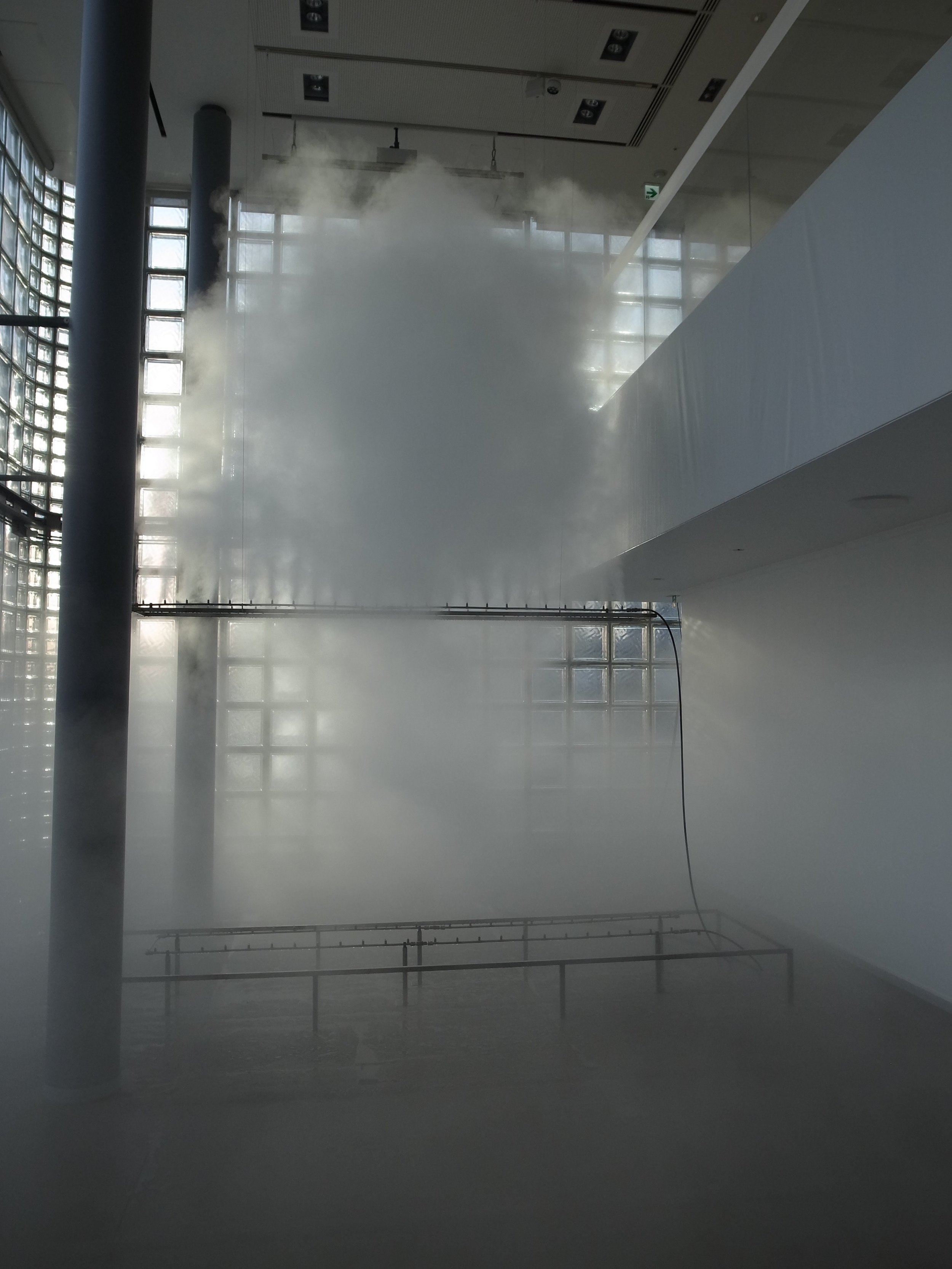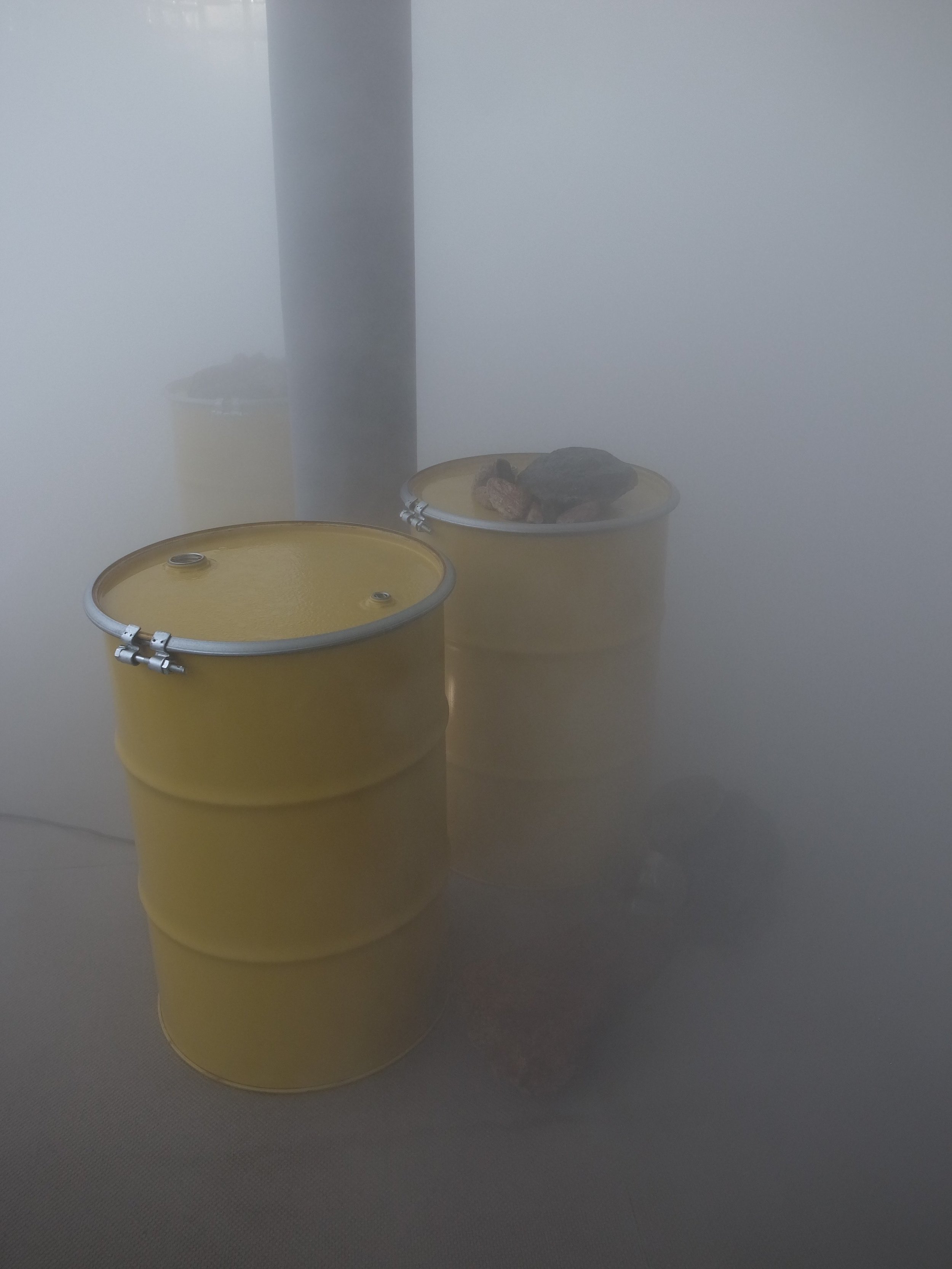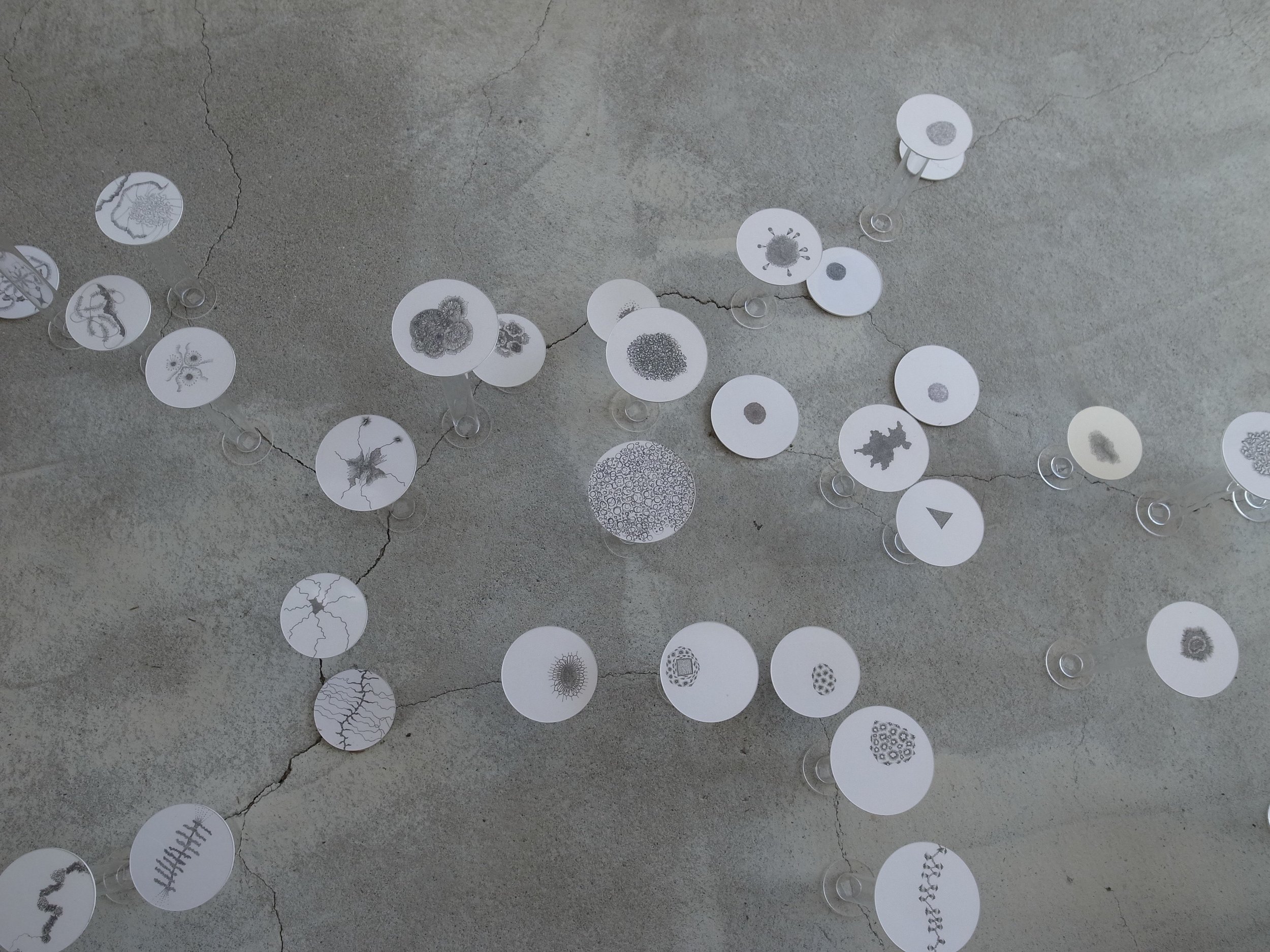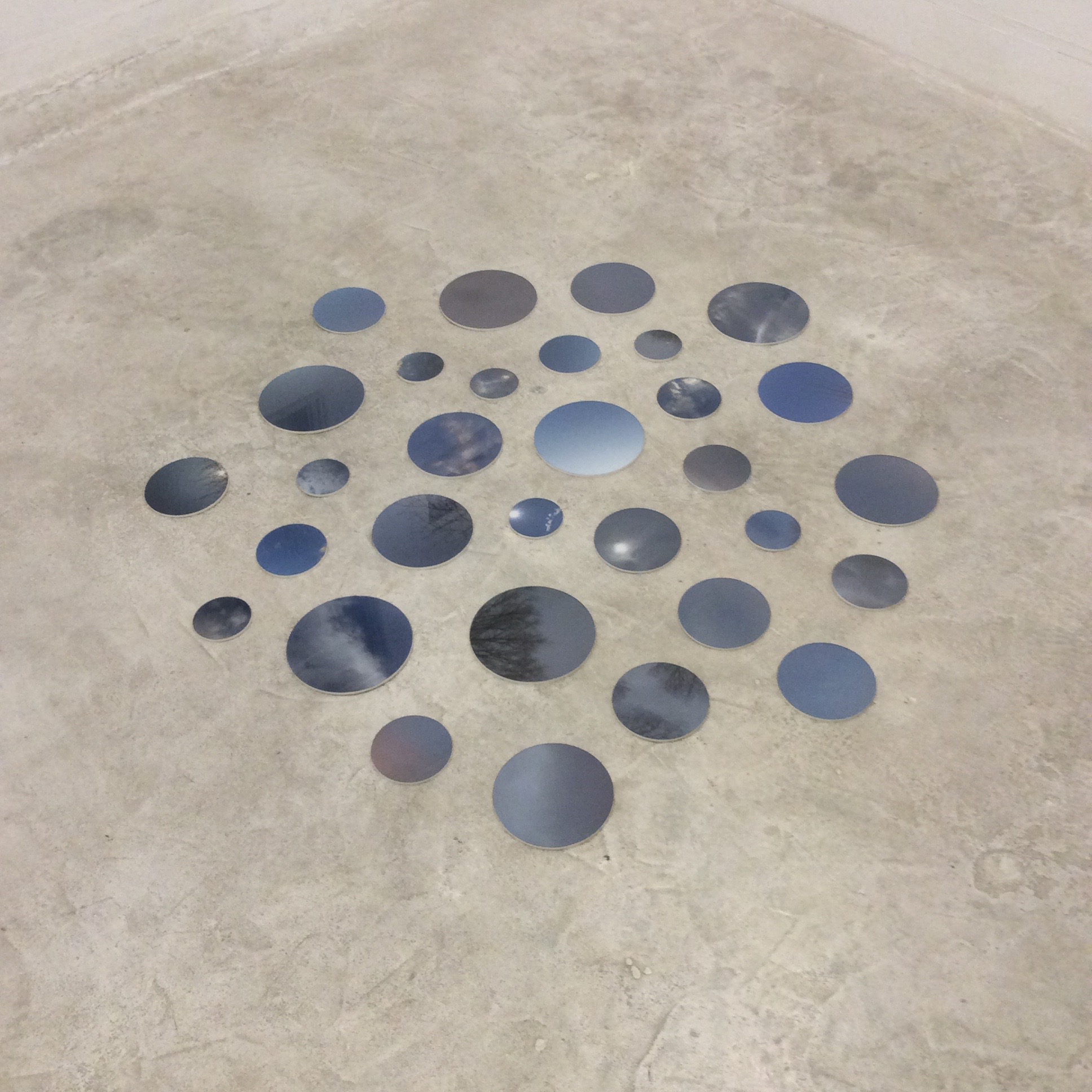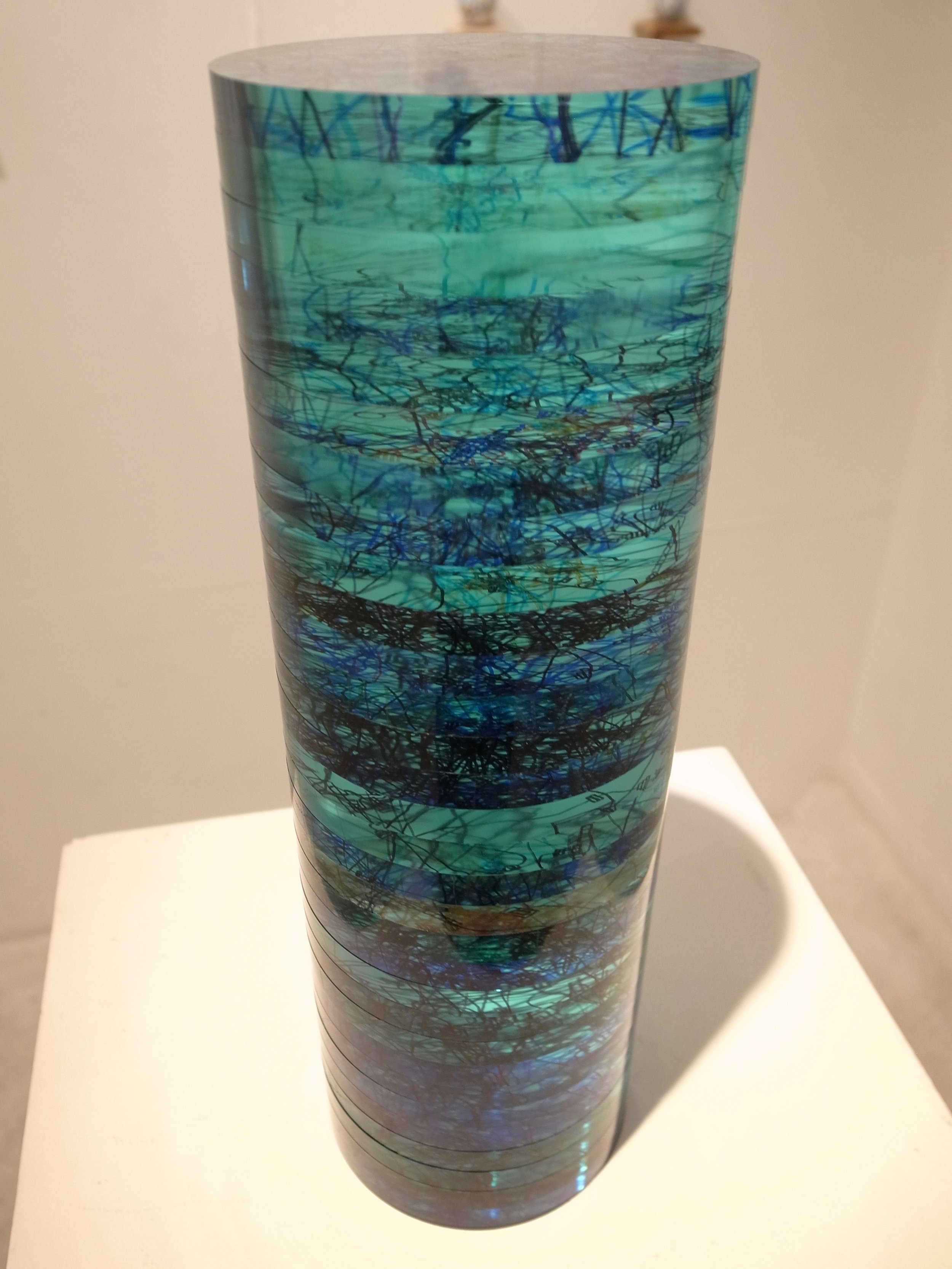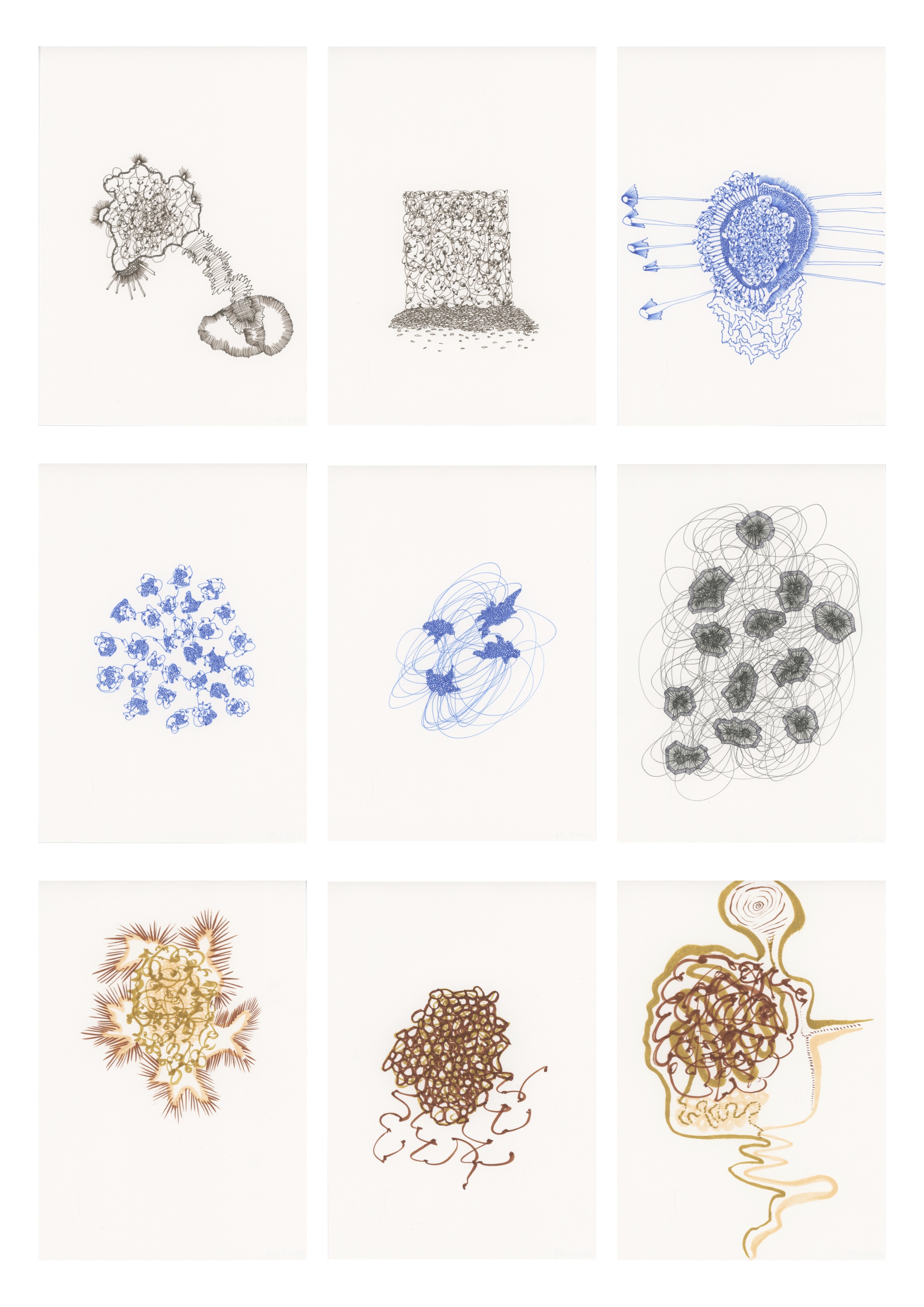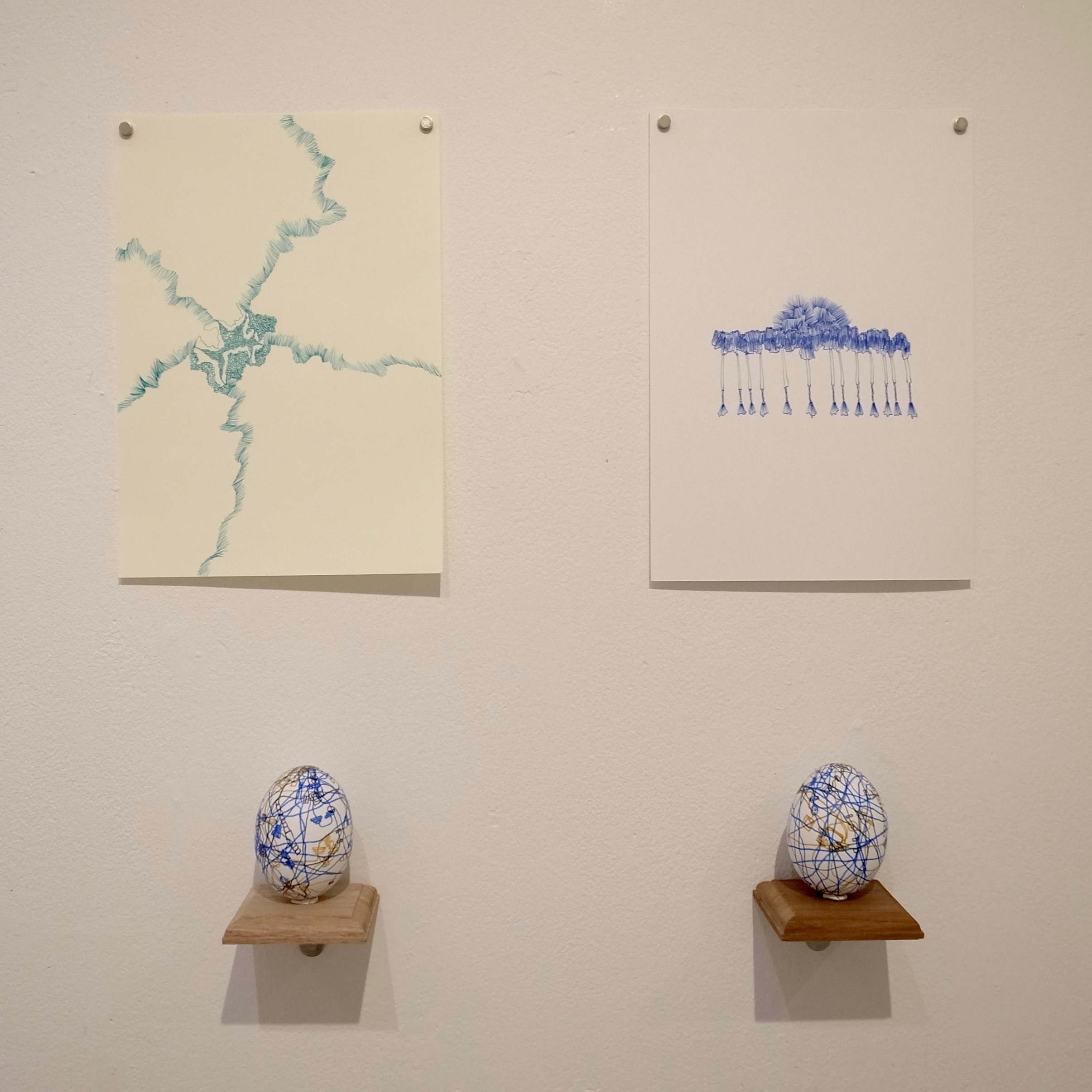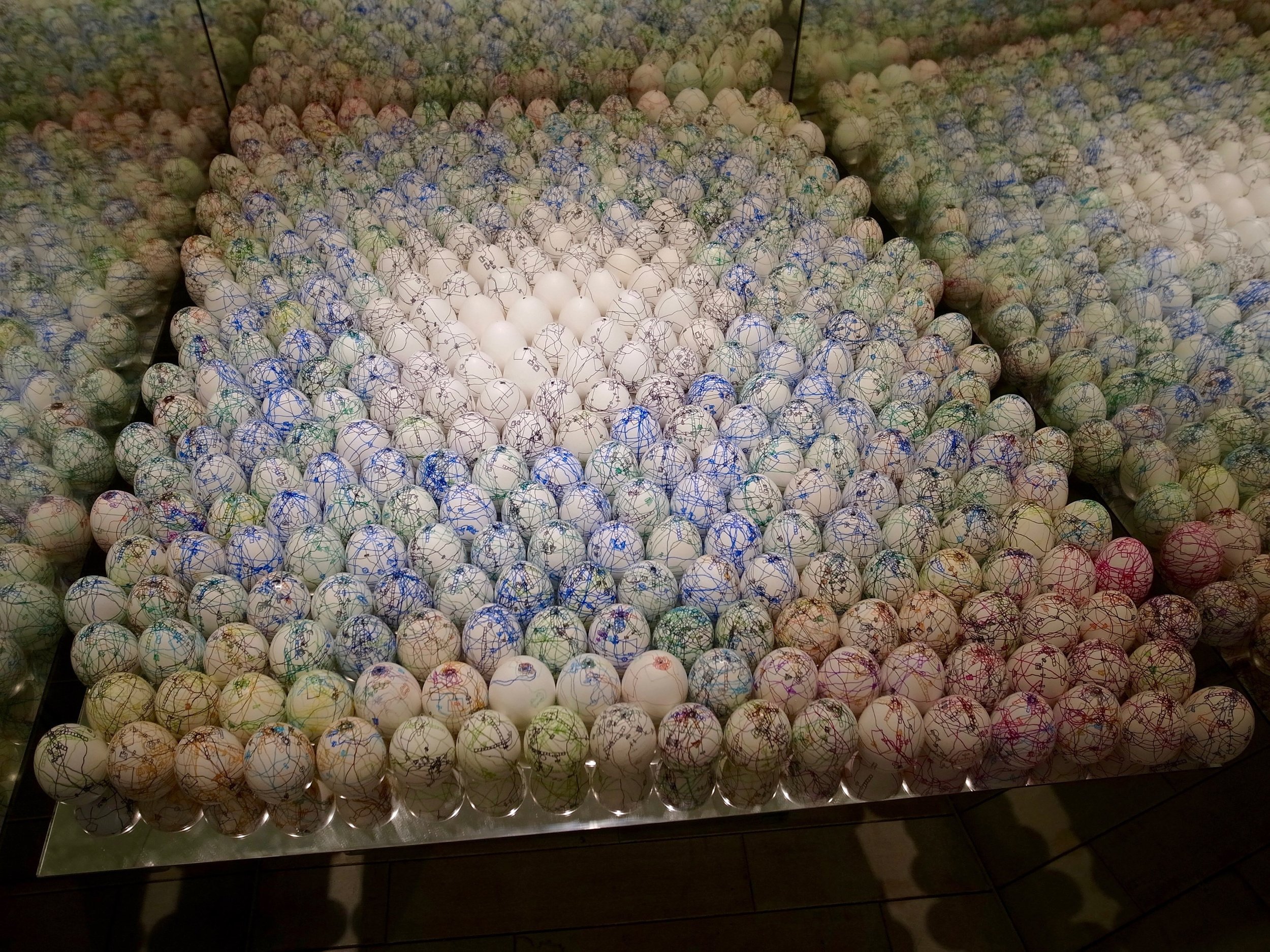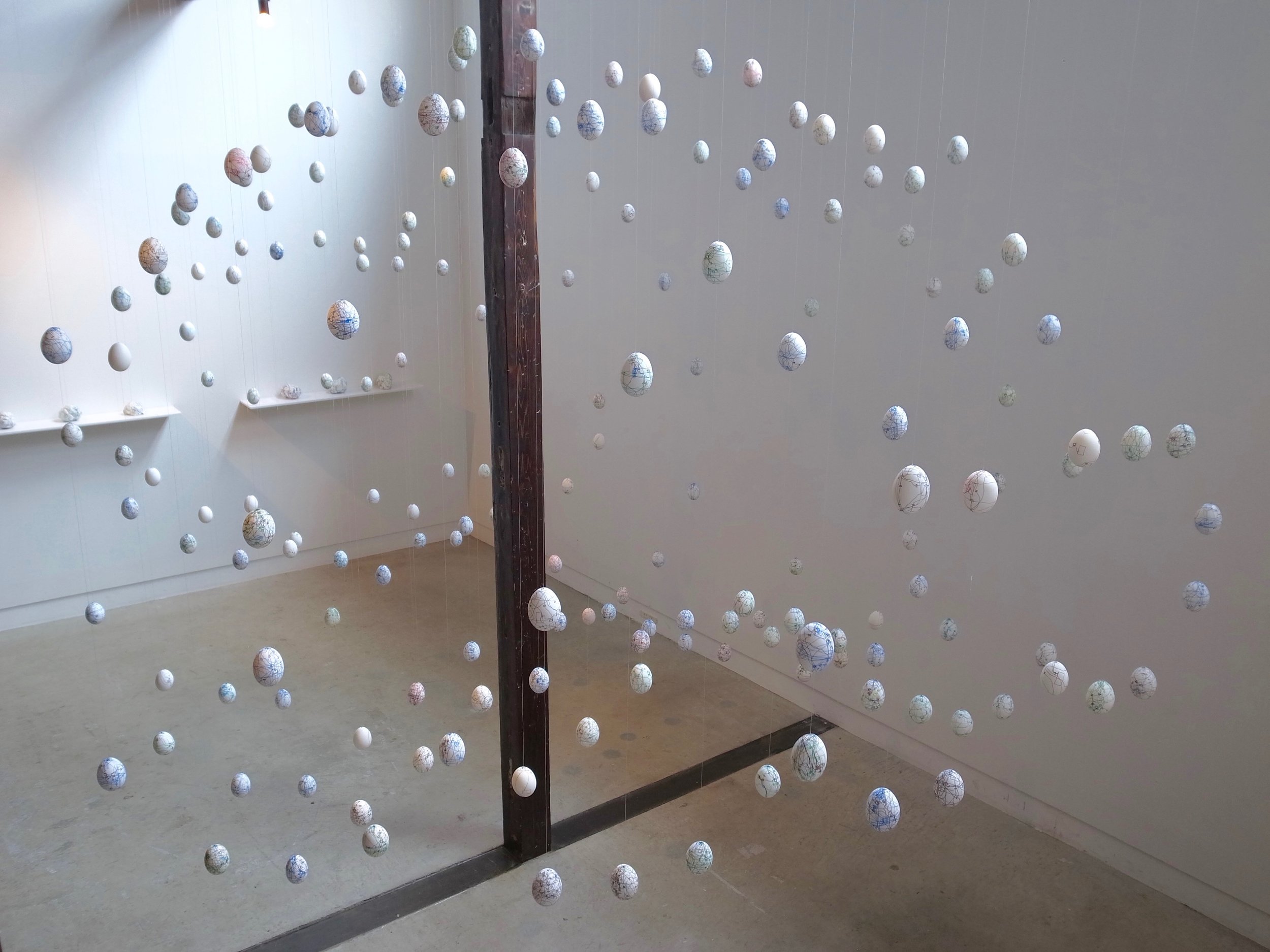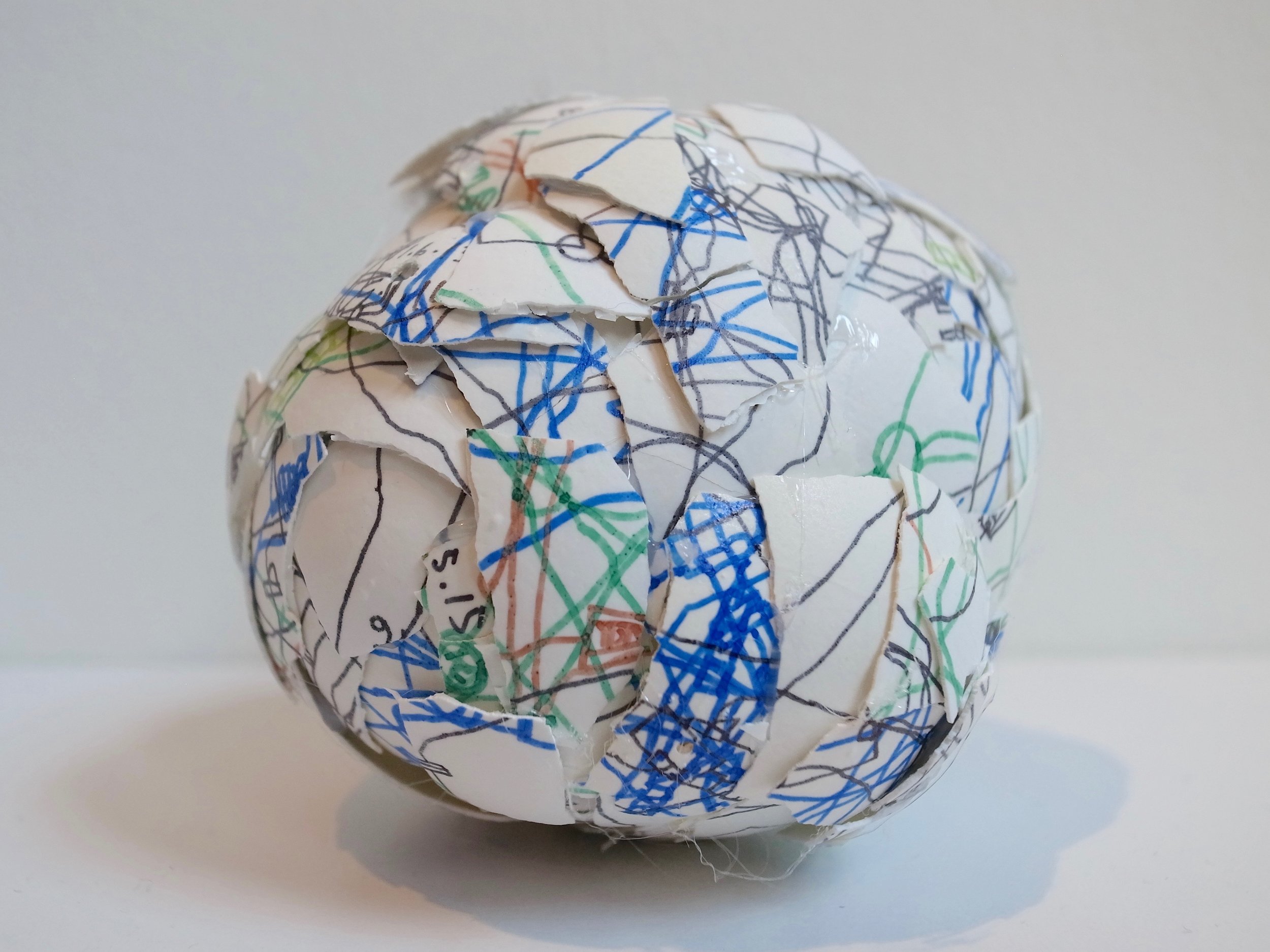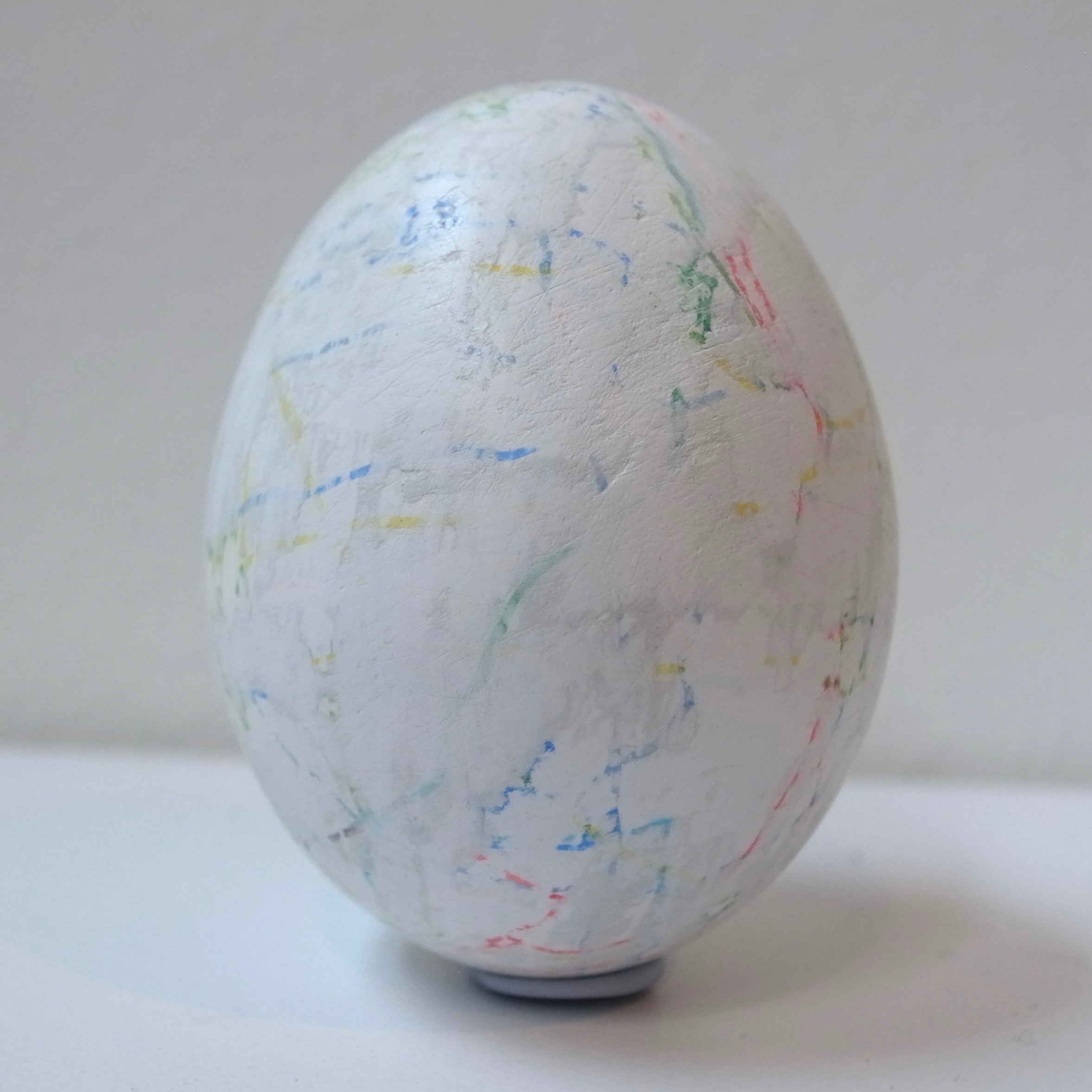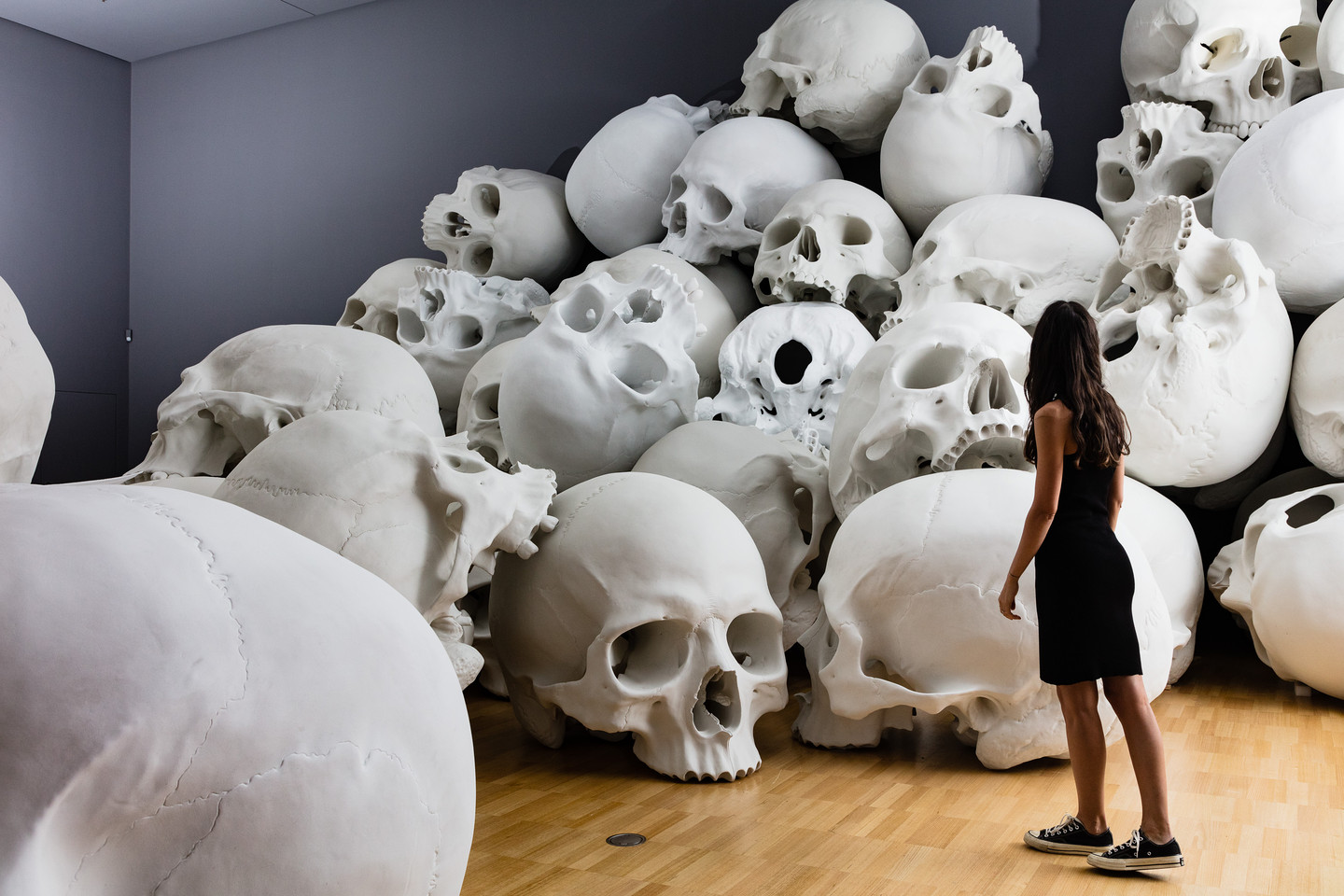As the week came to an end, I took a list of the exhibitions that I wanted to see that were closing this weekend. There are a few I may not get to, but I plotted my route on the train/subway and headed over to Bakurocho to see Lawrence Weiner's exhibition at Taro Nasu. During a conversation in the middle of my gallery hopping, I realised that I had not done a significant tour of galleries in this area for more than four, possibly five years. In those intervening four or five years, the number of galleries has grown significantly and they are clustered close enough to each other for walking and eventually spending an entire day in the area. Here is a map that I picked up of the still growing gallery scene in this area.
I headed to Taro Nasu first and it seemed to be closer to the Bakurocho station than I remembered. Lawrence Weiner is one of the first conceptual artists that I discovered during my time during graduate school and he is well known for his text-based installations such as this on from 2012.
From the Lisson Gallery website
The title of his exhibition is "Water and Some of Its Forms" and this is the main work as you walk down the stairs into the gallery space.
From the Taro Nasu website
As you can see, he has combined English with Japanese for the installation. To my recollection, this is first time that I have seen his work combine two languages so that their forms overlap. In addition to this piece there was another larger wall piece, but what drew me were a series of more diagrammatic text based drawings. One of which I snapped a photograph of below.
I climbed back up the stairs and walked next door and went to check out gallery αM in the basement. Founded in 1988, gallery αM has its roots in the Musashino Art University, but shuttered its first location in Kichijoji in 2002. Since 2002, gallery αM has hosted exhibitions by over 25 invited curators, each of whom explores a theme through a series of solo exhibitions. The exhibition I happened upon was Volume 6: Censure Karasawa curated by Yuri Mitsuda from the DIC Kawamura Memorial Museum. The theme of his seven exhibition project is "Mirror Behind Hole - Photography Into Sculpture" Here are a couple images of what I saw in the space.
Karasawa's work is quite gorgeous. The wood is meticulously cut into various forms and rather than leaving the form as such each piece is then cut open and then hollowed out. He uses paraffin wax to fill in the hollowed space to give that space form. He also uses the cross-sectioned wood forms and reconfigures them to emphasise the hollowed out space without the paraffin wax. The theme of the project is quite interesting and I am interested in seeing what Volume 7 holds in store as well as revisiting previous volumes online.
From there I caught the elevator and headed up to the 4th floor to Kiyoyuki Kuwabara Accounting Gallery to see a small show by Shoji Ueda whom is one of my favourite Japanese photographers. This gallery just opened at the end of January and is an accounting office and art gallery. I wish I could tell you more about that, perhaps when I visit again. In any case, there were 10 gorgeous prints from Ueda's White Wind photographic series along with the rare White Wind photo book. The images for this series were take with the Vest Pocket Kodak which were also on display in the exhibition. You can learn more about Ueda's amazing photography and numerous works in this Guardian article "Shōji Ueda: the most beautiful, surprising photobook of the year" from late 2015. If you ever have a chance to see his color prints, run, don't walk and just bask in the soft light and sensuous colours!
From there, I realised I still had time before heading to Shinjuku and that Jinen Gallery was relatively close to where I was. I wandered over there because I had been drawn to the exhibition postcard for Masahiro Imai's Historia Naturalis.
From the Jinen Gallery website
There is definitely Joseph Cornell being channeled through this work. The space at Jinen Gallery is usually split into two spaces for two person exhibitions, but Imai had the entire space to himself. The front half of the space was devoted to work that made reference to Dylan Thomas biography, famous poem verse,
"Do not go gentle into that good night,
Old age should burn and rave at close of day;
Rage, rage against the dying of the light."
and the motion picture Interstellar. I do not know much about Dylan Thomas, but I have hear this verse often and even more interesting for my own process is that I have been meaning to rewatch Interstellar due to my revived interest in science fiction as well as my own processing of human mortality and beyond. The materials that Imai uses for these boxed pieces stems from his vast collection of antiques which he had accumulated for years with giving thought to incorporating them into his artwork. Historia Naturalis was the debut of these boxed pieces. The coincidental convergence of the story of Historia Naturalis and my own interests jolted me life. As I looked at the map of other galleries in the area, I had thoughts of venturing around, but ultimately decided this was a good note to end on. I hopped back on the subway and headed to Shinjuku to attend the opening for the Narrative Abstract Art Vol. 6 group exhibition at the Art Complex Centre of Tokyo where Michelle Zacharias was debuting her dust paintings. Here a view of her work in the exhibition.
In response to her allergies and pervasive pollution, she has been collecting dust from various sources, filtering them and using the small dust particulates to create pigments which she uses to create her paintings which reference wind patterns which have a major impact on the severity of her allergies along with the pollution in the air.
Along with Michelle's work, the 29 other artists offered their individual takes on Narrative Abstract Art. Here are a couple of other artists whose works I was drawn to.
Chigira Shoko
kan.i.
Yuuki Hashino
From Yuuki Hashino's Tumblr
Shohei Oyama - Click to see one of his works
Kojiro Itakura
From the Art Imagine website
Narrative Abstract Art Volume 6 concluded my gallery visits for the week. There is a small chance, I will try and see one more show tomorrow as the theme is of great interest to me. Otherwise, my next round of gallery visits will be next Friday.






